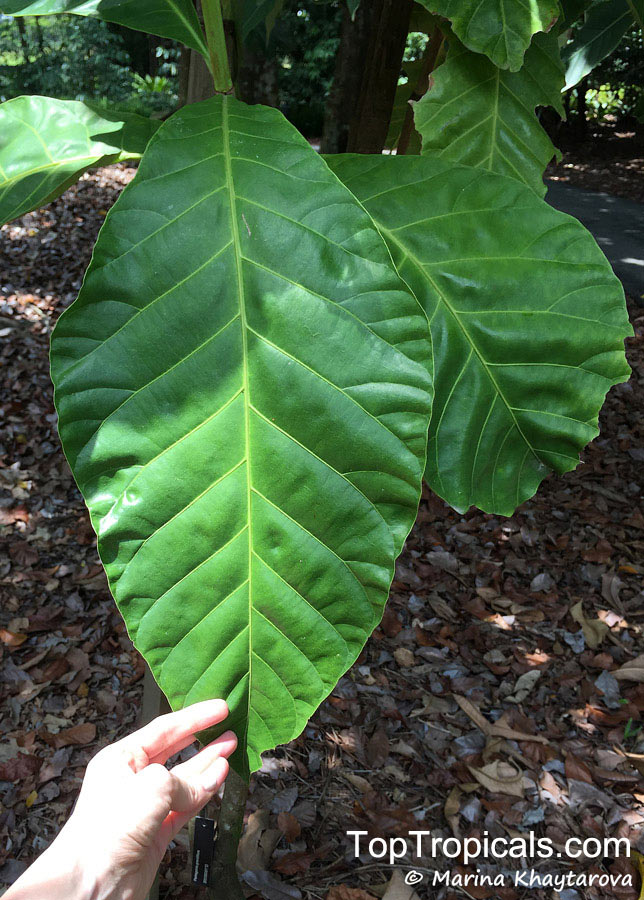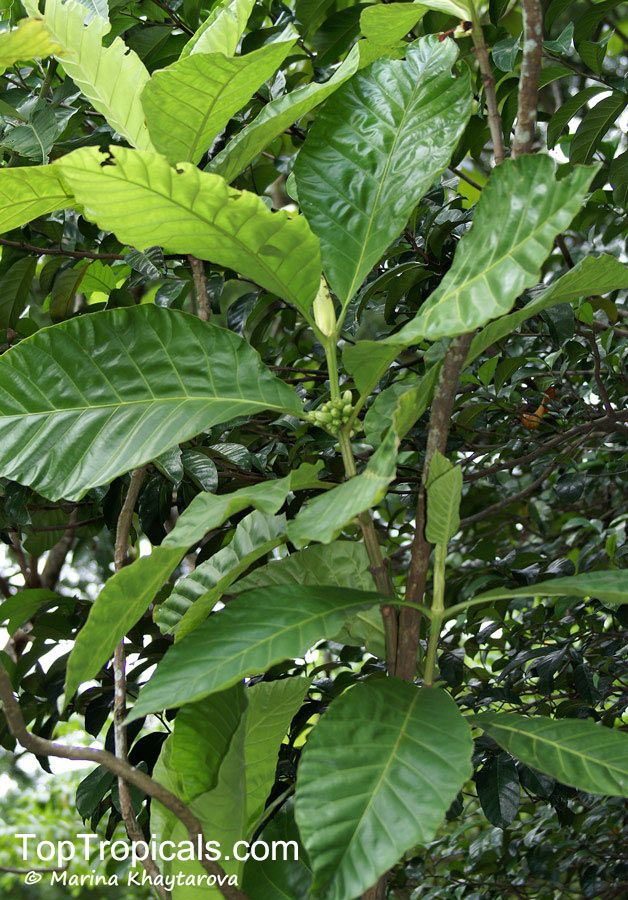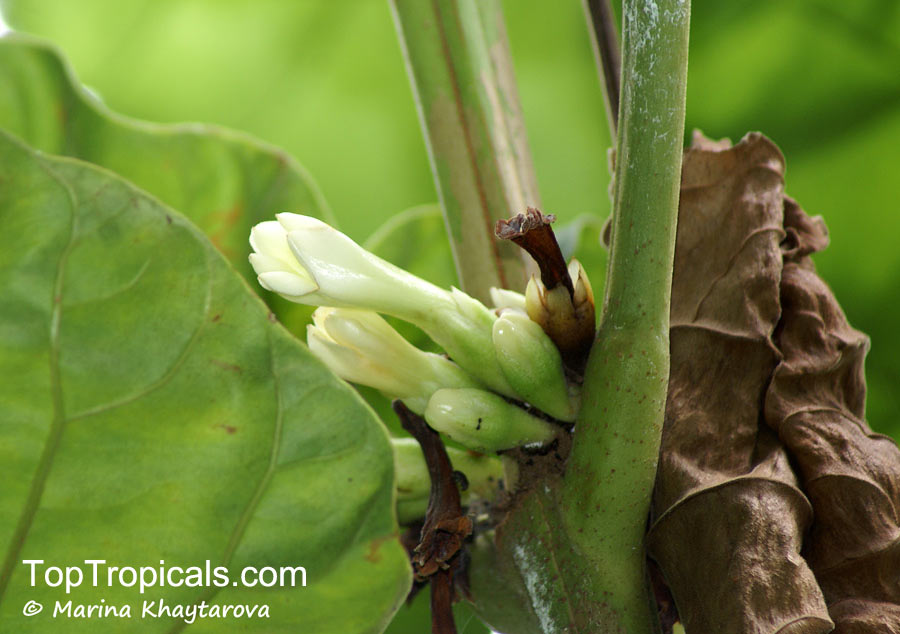Pentagonia grandiflora (Pentagonia)
Top Tropicals Plant Encyclopedia
Botanical names: Pentagonia grandiflora, Pentagonia gigantophylla
Common name: Pentagonia
Family: Rubiaceae
Origin: South America








Pentagonia grandiflora, commonly known as Pentagonia, is a native of South America with a variety of attractive features. Growing between 5-10 ft tall in the form of a large shrub or a small tree, Pentagonia is well-suited for gardeners looking for a unique, ornamental touch to their garden.
Ideally, Pentagonia prefers to grow in semi-shade conditions, with regular watering and warm moist conditions for optimal growth. During the blooming period, it produces off-white to white flowers that bring a unique flair to your garden. The leaves of this plant are also quite attractive, growing up to two feet in length and clustering near the end of the branches.
The Pentagonia plant is also edible and produces sweet fruits that are roughly three inches in size. It is a great addition to any garden as the fruits can be used to make sauces, jams and preserves. Not only do they taste good, they are also high in nutrients like vitamin C and are generally considered as a healthy addition to any diet. The plant can produce up to five fruits per season.
Pentagonia is hardy enough to be grown in USDA Zones 9-11 and is also suitable as a container plant in a sunny window in colder climates. For gardeners in colder areas, the Pentagonia should be given extra winter protection, however if done correctly, the plant is able to thrive during the winter providing added color to the garden.



